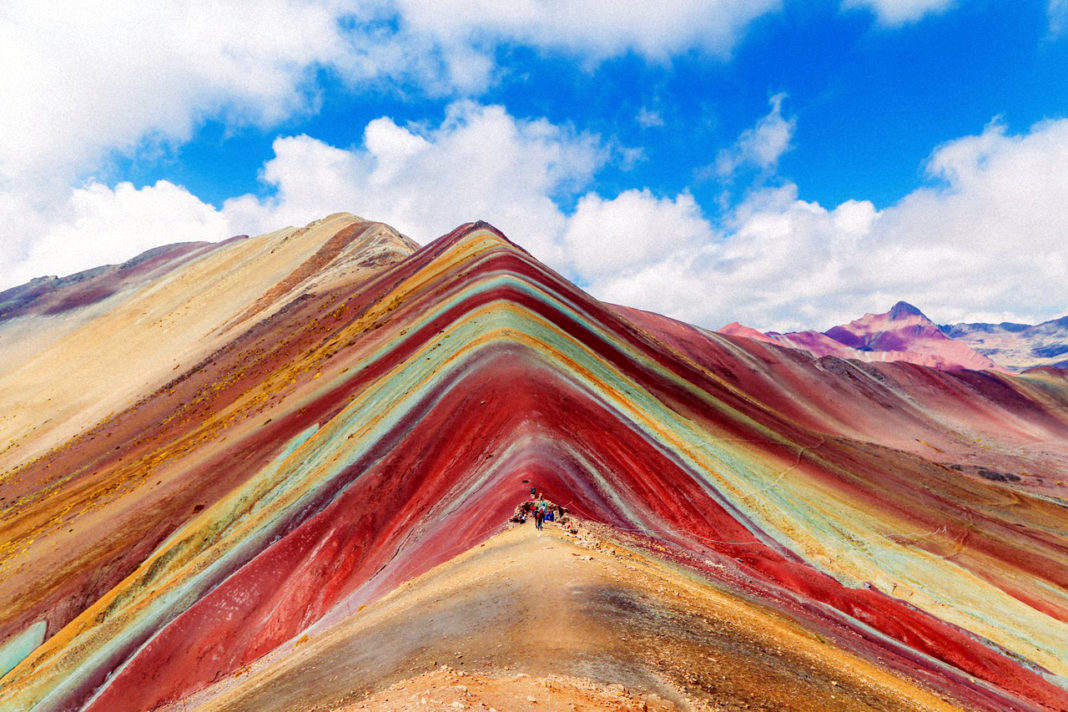Vinicunca, or Winikunka, also called Montaña de Siete Colores, Montaña de Colores, or Rainbow Mountain, is a mountain in the Andes of Peru with an altitude of 5,200 meters above sea level.
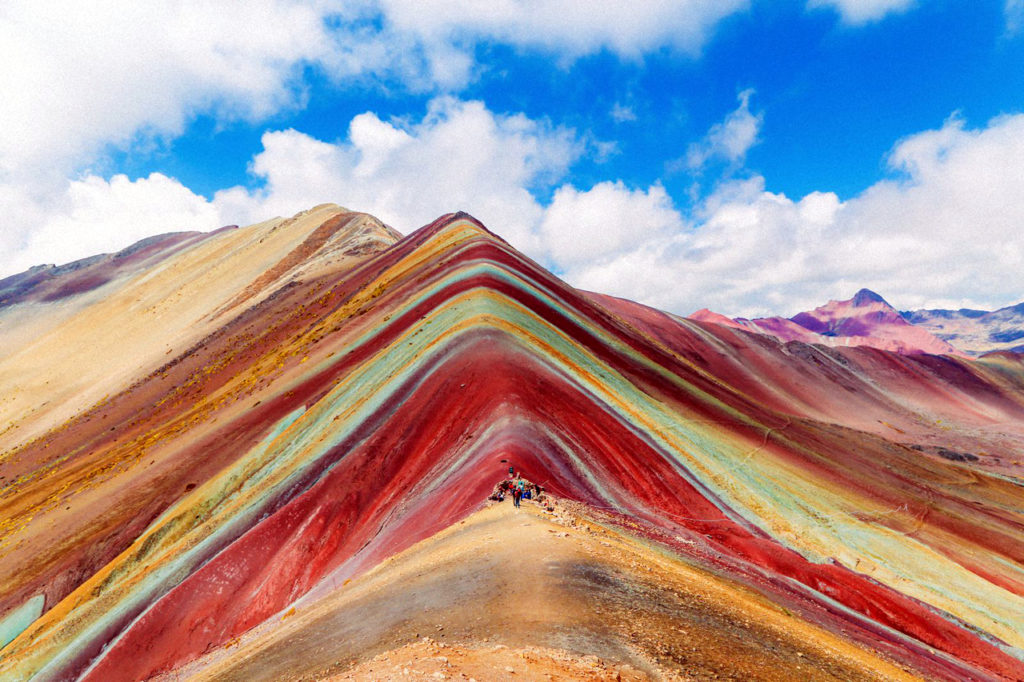
In mid-2010, mass tourism came, attracted by the mountain’s series of stripes of various colors due to its mineralogical composition on the slopes and summits. The mountain used to be covered by glacier caps, but these have melted due to climate change approximately 10,000 years ago.
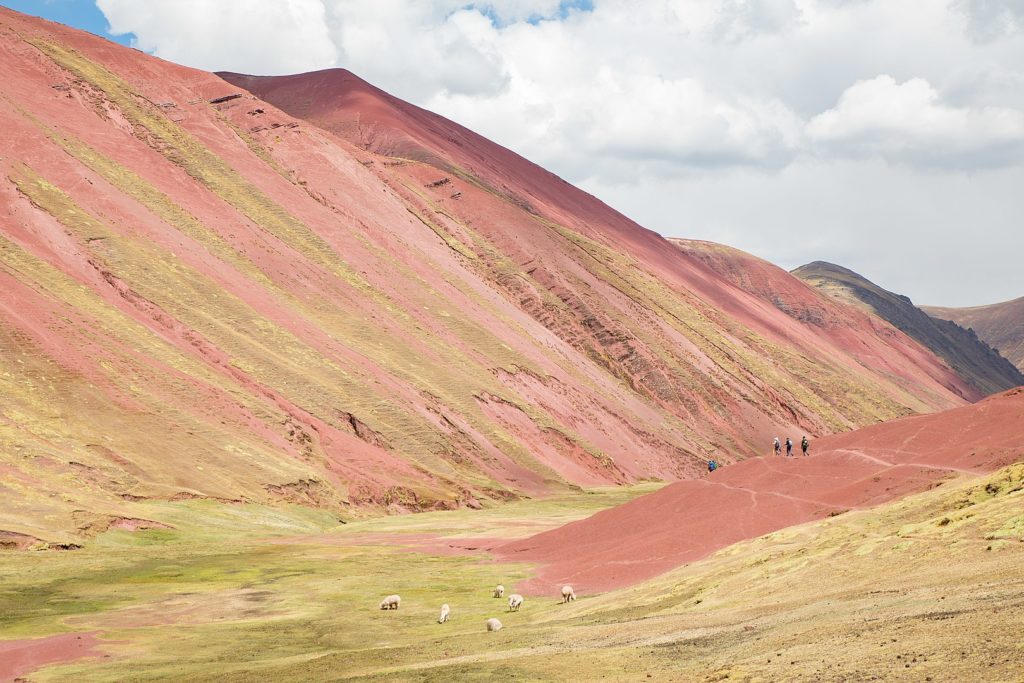
Formed by weathering, environmental conditions, and sedimentary deposits over time, the mountain’s unique mineralogy created a marbling effect, with layered hues of gold, lavender, red and turquoise towering into the sky.

According to the Cultural Landscape Office of the Decentralization of the City of Cusco, the seven colors of the mountain are due to its mineralogical composition: the pink color is due to red clay, fangolitas (mud) and arilitas (sand); the whitish coloring is due to quartzose, sandstone and marls, rich in calcium carbonate; the red is due to clay stones (iron) and clays belonging to the Upper Tertiary period; the green is due to phyllites and clays rich in ferro magnesian; the earthy brown is a product of fanglomerate composed of rock with magnesium belonging to the Quaternary period; and the mustard yellow color comes from the calcareous sandstones rich in sulphurous minerals.
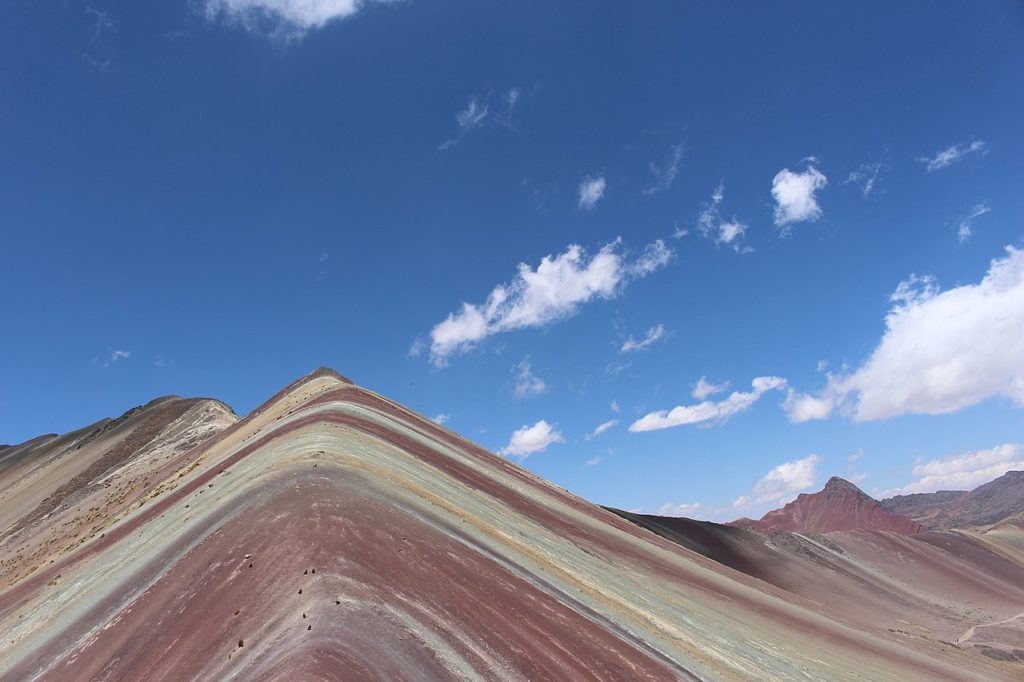
Travelers to Peru and locals generally agree that the best time of the year to visit the colorful site is in August since it is the dry season and provides a very beautiful view, maximizing the vivid colors of the mountains. Nevertheless, famous colors always look beautiful.
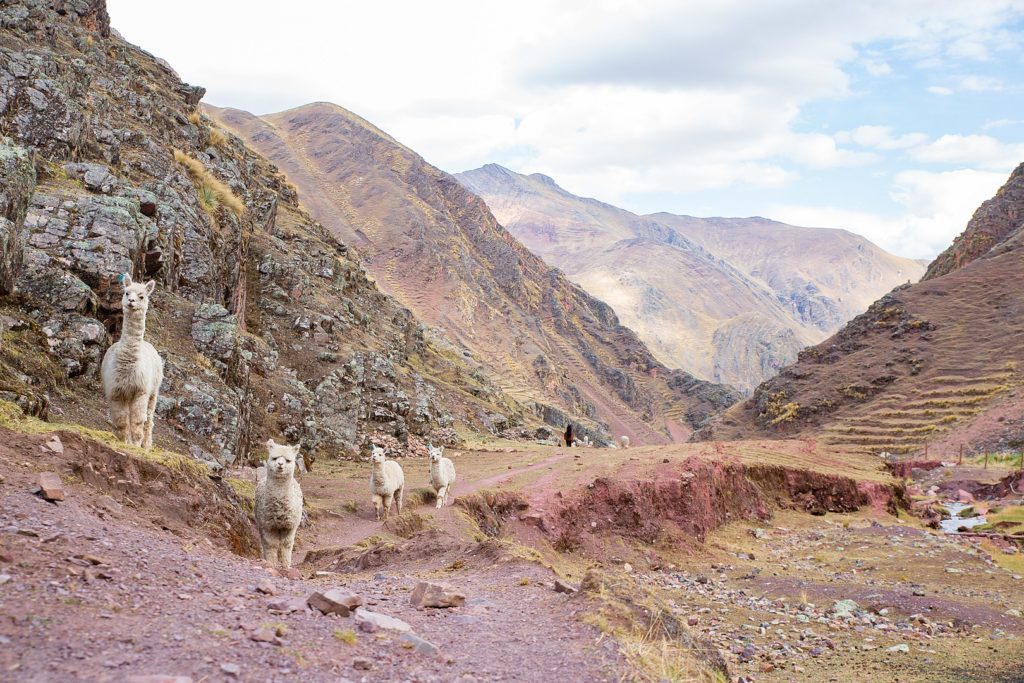
Even during the tourism “shoulder season,” Vinicunca’s summit attracts huge crowds. Locals take advantage of this by selling souvenirs — including photos with llamas wearing glasses — so it’s worth taking some extra soles on the hike.
According to wikipedia





